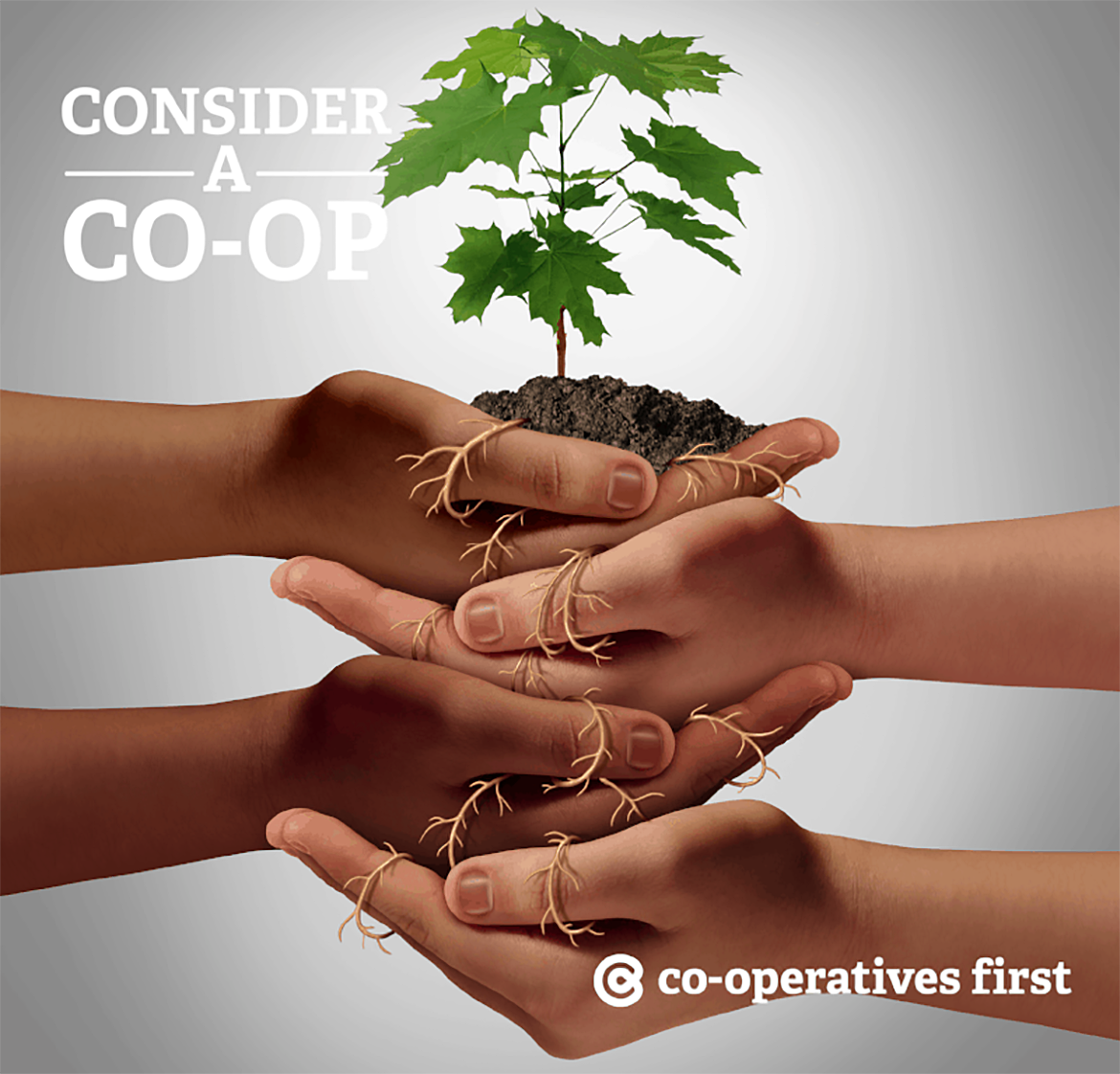Western Canada is large and not everyone lives in a big city
Western Canada is a big place. Providing services and meeting the needs of people living in rural and remote places is a struggle for municipal and First Nations leaders. But the high costs of providing services to small populations across spread out spaces can be reduced through innovative approaches to service-delivery – by way of Western Canadian community partnerships.
Community partnerships in Western Canada build capacity and reduce costs
Many communities across Western Canada recognize the importance of partnering with their neighbours to build capacity and reduce individual entry and operating costs. In the early 1900’s, Western Canada saw numerous utility and producer co-operatives created specifically to do what federal or provincial government and outside market forces wouldn’t or couldn’t do.
Today we’re seeing a resurgence in Western Canadian community partnerships. These partnerships are as unique as the individual communities they serve and many are born out of necessity. Some are between individuals, municipalities, towns, bands, councils, and others, encouragingly, between First Nations and municipalities. To grow and thrive, communities need to overcome traditional divides, such as feuds between families, towns, municipalities, First Nations and most importantly the historic and ongoing barriers related to individual and systemic racism.
Indigenous and rural community partnerships in Western Canada are key to future growth
Partnerships between the young and growing populations within Indigenous communities and the aging and often shrinking populations from rural areas are going to be very important to the health and well-being of all rural and remote communities moving forward. Creating high quality job opportunities and providing reliable services is essential to keeping and attracting people, business and investment to rural and remote communities.
So far, these partnerships have been forming sporadically, and are most common in BC presently, but the potential for growth across Western Canada’s rural and Indigenous communities based on a co-operative, rather than antagonistic, relationship is significant and should be taken seriously. Communities forming cross-community partnerships will be much more likely to grow and thrive, while those that don’t risk further alienation, limited capacity and reduced economic strength in comparison. Now is the time to work together within a broader market, not against each other in smaller (increasingly irrelevant) ones.
The co-operative model is versatile and adaptive to innovations
There are many great examples of communities turning to the co-operative business model to access affordable services owned by and benefiting local community shareholders. The co-operative business model offers a unique ownership and financial structure for community leaders struggling to provide utilities or other regional services. Adoption of the model helps communities avoid the influence (and sometimes bullying) of large corporate players and governments making decisions from outside the community and with priorities that may not be in the best interest of the region; and, on the flip side, increases development through a DIY method helping make the local market more attractive to outside investment, people and business.
As an example, the utilities market in rural or remote communities is often non-competitive, which results in firms charging inflated prices. Moreover, any profits these firms generate often leave the community. This is fair. They have a business to run and shareholders to answer to. Government is another option for utilities in tough markets, but they tend to be slow, inefficient, centralized and somewhat at the mercy of the swings of the governing party of the day. Organizing service delivery using the co-operative business model allows local people and communities the opportunity to own and control the services they use, create local jobs and keep the benefits of the business in the community.
Start with a conversation amongst neighbours
Not all community partnerships in Western Canada require a co-operative business model, and the co-operative model is not right for every situation. Sometimes federal/provincial government or traditional market sources are better suited to delivering a service. But communities need to have the conversation first to determine what makes the most sense. Community leaders need to gather their neighbours and have that conversation. And there’s lots of help available to do this. Your local economic development agencies or personnel can help facilitate discussions and provide resources. Community Futures has a wide range of supports available. And here at Co-operatives First, we provide free co-operative business development resources and are more than happy to help facilitate cross-community meetings.
Okay. Sounds promising. But how does this work?
Here are two ways co-operative businesses can deliver regional services that cross community boundaries:
- The first (and most common) model draws on the consumer co-operative model, which provides individuals an opportunity to purchase shares in a service provider. There are many successful examples of this model in practice, including: Access Communications Co-operative Ltd. in Saskatchewan, the Battle River Power Co-op in Alberta, or any of the 170 members of the Alberta Federation of Rural Water Co-operatives Ltd.
- The second, and slightly more complicated model, is the one where we see a lot of promise for growing cross-community partnerships. This model relies on communities, organizations, or First Nations – as legal entities – to act as shareholders. A great example of this model is the Saskatchewan First Nations Technical Services Co-operative, which has individual First Nations as shareholders. The business will consolidate the delivery of technical services (e.g. housing inspections, water delivery, planning) to First Nations in Saskatchewan. The co-operative was proposed by the Federation of Sovereign Indigenous Nations in March 2015 and has since incorporated and engaged in planning.
Thinking about municipalities, local governments and organizations as shareholders may seem abstract, but operating in rural or remote communities requires innovative approaches to achieve sustainable economic, business and community development. Co-operative partnership between legal entities offers the capacity missing from individual communities, but provides the local input and control necessary to properly serving a community and constituents. Moreover, it leverages a powerful competitive advantage for regions who do it right.
What about MY community?
Not sure how this aligns with your community? Curious what kinds of challenges communities overcoming through a more collaborative approach?
Here are a few examples of possible Western Canadian community partnerships:
Reducing high energy costs
Reduce energy costs by forming a locally-owned energy co-operative to offset costs of powering community-owned buildings, such as arenas and schools. As utility-grade infrastructure challenges become more acute in some provinces, regional investment in community power systems will help increase consistency and reliability of the area’s power source. Particularly in communities with poor R-value housing and electric or heating-oil based heating, the relatively low cost of entry into solar energy can significantly reduce the energy costs of individual residences.
Accessing financial capital
Access to financial capital is limiting business development in rural areas, but there is generally plenty of capital available in the area. Instead of planting this capital in New York or Toronto, use it to invest in regional business development opportunities. Creating an opportunities development co-operative is one way to pool regional investors that support business, economic and community development. Sangudo Opportunities Co-operative in Alberta is an excellent example of community members using available regional capital to invest in business development in the area.
Reducing a housing shortage
Shortage of affordable or senior’s housing? Innovative uses of the co-operative business model can increase a community or region’s capacity to provide housing. We’ve seen investment co-operatives that finance home purchasing and building and produce a return through a rent-to-own program. Other alternatives include building capacity through community partnerships and co-operative housing development corporations. The collective purchasing power of a regional housing development business decreases costs and increases efficiencies. Plus, the pooled capital increases the borrowing power of the business. The benefit of forming a co-operative over a more traditional style corporation is the democratic governance structure, which allows input from all shareholders, and a community investment focus over a profit-only focus – something that can supplement and augment the existing profit-driven housing market and encourage growth.
Creating a marketing region
Tourism is a great way to increase primary industry. But creating the capacity to support a full-time staff and marketing strategy is often not within a single community’s means. By creating a marketing co-operative, regions can pool resources and have clear process for decision making, while also allowing each stakeholder to have a say in the direction of the organization.
Creating primary industry and high paying jobs
In Western Canada, we extract and produce a great deal of raw materials. What if we pool resources and create downstream industries for these raw materials. A major example of this is the Co-op Refinery in Regina. In the 1930’s, an enterprising group of 8 farmers from the area were upset about high gas prices and decided to produce petroleum themselves. Today the facility reinvests a half billion investment each year in upgrades, directly employees over 900 people and produces 130,000 barrels a day.
Another example of this DIY innovation and capturing of downstream market potential has been proven by Westlock Terminals. A group of farmers and business people in the area raised the capital investment to purchase grain terminals in Westlock, and created the competitive advantage of processing and marketing identity preserved grains. The terminal provides positive ROI through two classes of shares and has been an important player in maintaining the viability of local infrastructure. The plant has also increased the number of high quality jobs in the area and creates secondary economic benefits for hundreds of others.
Don’t let anyone tell you community partnerships in Western Canada can’t be done. It can and it has. And the competitiveness of your region may depend on how quickly you organize, partner and innovate.
To get our blogs direct to your inbox once a month, sign up for our newsletter.

 Written by
Written by 




